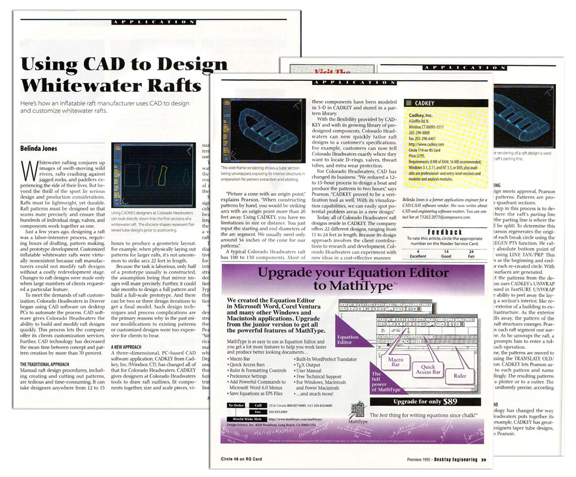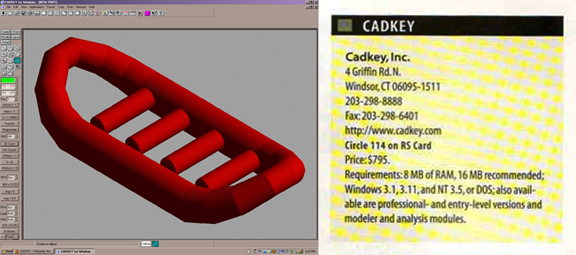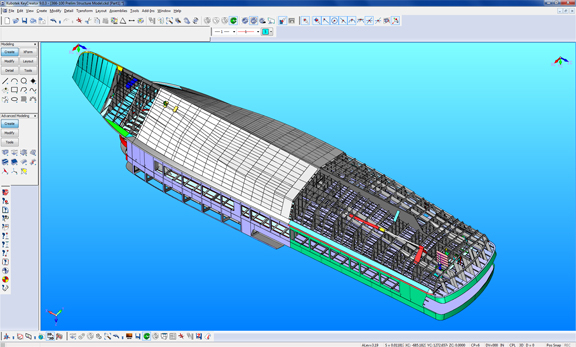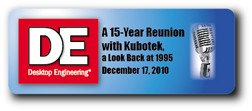December 17, 2010



Fifteen years ago, Desktop Engineering (DE) magazine ran a case study in its premiere issue (October 1995): “Using CAD to Design Whitewater Rafts” by Belinda Jones. It appeared with a half-page ad from MathType. The article was a close look at how Colorado Headwaters, a custom-raft maker, used CADKEY software to draft, test, fit, and cut patterns for its product line.
Now, 15 years later, both the advertiser and the software featured in the piece are still going strong. (Colorado Headwaters, however, seems to have disappeared, leaving few trace on the world wide web of its present whereabouts.) MathType is now owned and marketed by Design Science, a company specializing in software for mathematical notations. CADKEY is now known as KeyCreator, marketed by its new owner Kubotek (the acquisition took place in October 2003).
For the podcast series celebrating DE‘s 15th anniversary, I interviewed John McCullough, product manager for KeyCreator, and Scott Sweeney, VP of marketing. “Most CADKEY customer base [in 1995] and certainly AutoCAD users were doing 2D,” recalled McCullough. “A lot of large companies had two CAD systems. They had their major CAD system, typically running on Unix or mainframes. And a secondary group using PCs was doing mostly 2D.”
At the time, what Colorado Headwaters was doing with CADKEY—using it on PC to design in 3D—was an exception to the rule. (A sign of the bygone computing era: The system specs for CADKEY in the article read, “8 MB of RAM, 16 MB recommended.”)
One of the notable milestones after Kubotek’s acquisition of CADKEY, noted McCullough, “was the direct feature recognition [a forerunner of what would later become direct modeling, history-free modeling, and explicit modeling]. This is the ability to look at a model and, instead of trying to remember how it was created or what the original intent was, just focus on the shape itself, and use geometry tools to extract [feature info] so that it’s editable.”
“Six, seven years ago when I started [working with the KeyCreator team], we were all very aware that the main way we were communicating with the customers was a one-way street, and that was through the media—getting articles placed and taking advertisement in the physical [print] magazine.” recalled Sweeney. “Today, most of our leads—95% of the people looking to learn about our product—are coming from the internet.”
Once, people dreamt of futuristic metropolis with suspended highways and flying cars (as envisioned in The Jetsons cartoon series). This, however, has yet to come true. Sweeney anticipated, “The way we interact with our PCs, laptops, and devices would be dramatically different—it’s gonna be an interesting ride.”
For the complete interview, listen to the podcast below:


Subscribe to our FREE magazine, FREE email newsletters or both!
About the Author
Kenneth Wong is Digital Engineering’s resident blogger and senior editor. Email him at [email protected] or share your thoughts on this article at digitaleng.news/facebook.
Follow DE





